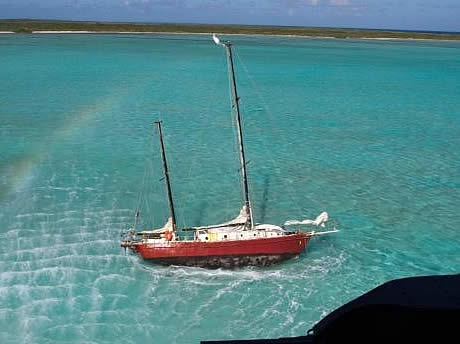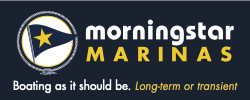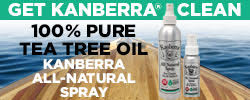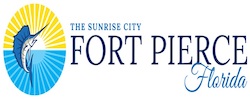Announcing our New, Revolutionary Marina Directory Format!
The entire Salty Southeast Cruisers’ Net “bunch” takes great pride in announcing a MAJOR upgrade to our reporting of marina services, prices and statistics. This project has been a year in the making, and countless hours of work have gone into copying and pasting, line by line, data from our old format into the new.
Behind the scenes, what we have done is to move our various Marina Directories from a document based scheme, to a database manger-like scheme! That may not mean much to you, but it allows us to present marina data in a far more readable and user friendly form. Throw in LIVE chart and satellite images of EVERY marina in our directories, and we think you will discover that SSECN’s reporting of marinas is now second to none in the marine publication business.
Rather that prattle on, an example is worth another thousand words or so. AFTER reading to the end of this section, please go to:
/marinas/030-georgetown-winyah-bay-pee-dee-river-black-river/
This link will bring up an example of our NEW MARINA LISTING FORM! This particular section covers Georgetown, South Carolina. Normally, you would get here by using our red, vertically stacked menus on the right side of this, and all other (except Chart View) SSECN pages, click on “South Carolina,” then “SC Marinas,” then “Marinas, Georgetown, Winyah Bay, Pee Dee River, Black River (AICW Statute Mile 403 to 410).”
Back to the Marina Listing Form. What you now see is a bare bones listing of marinas in the Georgetown, SC region. This is what you might call a “quick look” page.
Scroll down until you come to the entry for Harborwalk Marina. You will see a list of service icons which depict what is available at this facility, and such basic data as “Phone,” “Website,” “Statute Mile,” “Location” and “Depths.”

THIS IMAGE IS AN EXAMPLE ONLY – You must follow the link above to open a page where all features are active!
Where this starts to get really EXCITING is discovered by making use of the three large, rectangular buttons on the bottom of this (and all other) marina entries. “View in Chartview” opens a Chart View page centered on Harborwalk Marina, and “Review This Marina” is pretty self explanatory.
The “magic” begins to happen when you click the “View Full Marina Info” button.
This button loads a page filled with everything you ever wanted to know about Harborwalk Marina! Scroll up and down and look at all the data fields. LOTS of info! Pretty neat, huh!

Note that MUCH Additional Data Lies Below This Image As Seen on ALL Marina Directory Pages THIS IMAGE IS AN EXAMPLE ONLY – You must follow the link above to open a page where all features are active!
NOW, NOTICE THE TWO IMAGES BETWEEN THE “BASIC MARINA INFORMATION” AND “SERVICE DETAILS” SECTIONS! ONE IS A CHART IMAGE CENTERED ON HARBORWALK MARINA, AND THE OTHER IS A SATELLITE IMAGE OF THE SAME FACILITY. THESE ARE NOT STATIC IMAGES. THEY ARE LIVE!
Put your pointer inside either the chart or satellite images, hold down your left mouse button and drag. The chart or satellite images MOVE. You could drag the image all the way north to Maine or south to Key West. You can also adjust the zoom level by using the “+” “-” vertically stacked zoom tool, or use your mouse wheel to zoom.
Want to see a full size image of what’s in the window? Just click on the “View this Marina on a Full Sized ChartView Page” link, and, presto-chango, now you are looking at a full page image of the chart or satellite image. When you are finished with your perusal, simply click the “Return to Previous Page” button above the chart/satellite image, and now you are back to the full listing of specifications for Harborwalk Marina!

THIS IMAGE IS AN EXAMPLE ONLY – You must follow the link above to open a page where all features are active!
And, may I be so bold as to remind everyone that all our marina information has been PROFESSIONALLY RESEARCHED. All the data you see in our marina directories has been verified, in most cases on-site, by myself or the SSECN staff! You can’t get better accuracy than that!
The future of this new “database manager” SSECN capability is VERY EXCITING. Next, we will bring our Anchorage Directories” into this new format, followed by bridges and AICW Problem Stretches. A few months from now, we will offer ADVANCE SEARCH CAPABILITY where you will be able to call up every marina within, for example, 20 miles of AICW Statute Mile 400 that has showers, 50 amp power hookups and diesel fuel! How’s that for a sterling service to the cruising community.
And, of course, as always, our enhanced marina directories are usable by members of the cruising community at absolutely NO CHARGE, and without even the need to set up a user name nor a password.
Our new marina directories ARE NOW READY FOR YOU TO USE! PLEASE USE THEM, and, oh yes, let us know what you think!
One final but VERY IMPORTANT word! We could never have undertaken this HUGE project without the support of our loyal sponsors. WE ASK THE CRUISING COMMUNITY AGAIN TO PLEASE PATRONIZE AND SUPPORT OUR SPONSORS WHENEVER POSSIBLE! And, when you are visiting a sponsoring marina, repair yard, coastal restaurant or other nautically related business, please take a moment to tell them how much you appreciate their support of the cruising community by way their support for the Salty Southeast Cruisers’ Net!
Thanks so very much for your time and attention!

































Be the first to comment!